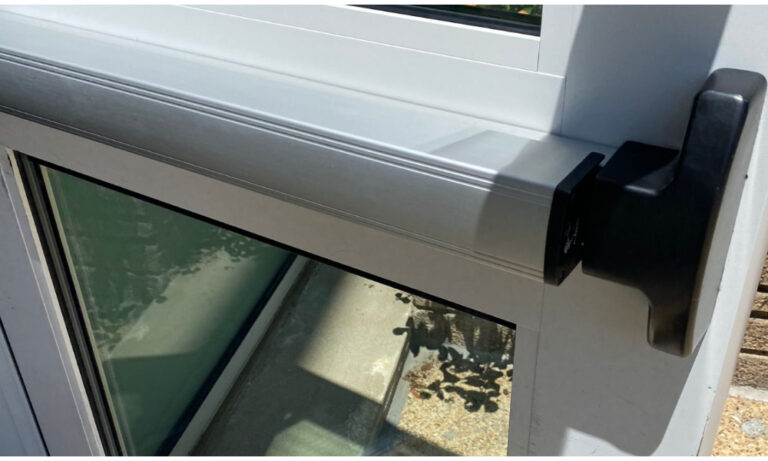
What Is Asbestos and Why Is It Dangerous?
Asbestos is a naturally occurring mineral that was widely used in construction materials for its durability and resistance to heat. However, its fibers become hazardous when disturbed, as they can break apart and become airborne. Once inhaled, these microscopic fibers can settle in the lungs, potentially causing serious illnesses like asbestosis, lung cancer, and mesothelioma. These health risks make it critical for homeowners to understand the materials in their homes that might contain asbestos.
Common Sources of Asbestos in Older Homes
Older homes, particularly those built before the 1980s, are more likely to contain asbestos. Common locations include:
- Insulation around pipes, boilers, and furnaces.
- Ceiling tiles, especially “popcorn” ceilings.
- Vinyl floor tiles and adhesives.
- Roofing shingles and siding materials.
- Joint compounds used in drywall installation.
Homebuyers should be cautious and consider consulting an expert to assess the condition of these materials and determine if they pose a risk.
Health Implications of Asbestos Exposure
Exposure to asbestos fibers can lead to long-term health issues. While symptoms may take years to appear, the damage caused by inhaled fibers is irreversible. Diseases associated with asbestos exposure include:
- Mesothelioma: A rare but aggressive cancer affecting the lining of the lungs.
- Asbestosis: A chronic lung condition that causes scarring and breathing difficulties.
- Lung Cancer: Often linked to prolonged exposure, especially in smokers.
Understanding these risks and proper handling of asbestos is essential for maintaining a safe living environment. Homebuyers need to weigh the potential dangers and costs before committing to properties with suspected asbestos-containing materials.
Identifying Asbestos in Your New Home
Signs of Asbestos-Containing Materials
Recognizing materials that might contain asbestos can be tricky, especially since many of these materials blend in with common household items. Damaged or deteriorating materials are often the first clue. Look for signs such as frayed insulation, peeling ceiling tiles, or crumbling floor tiles. If you notice a powdery residue around pipes, walls, or floors, it might indicate the presence of asbestos. However, keep in mind that visual identification alone is not enough to confirm asbestos.
Areas of the Home Most Likely to Contain Asbestos
Asbestos can be found in various parts of older homes, especially those built before the 1980s. Some common areas include:
- Insulation around boilers, ducts, and pipes
- Ceiling materials, such as popcorn ceilings or acoustic tiles
- Floor tiles, particularly 9×9-inch tiles, and the adhesives beneath them
- Roofing materials like shingles and cement siding
- Textured paints and joint compounds used on walls and ceilings
These materials were valued for their durability and fire resistance, which is why they were so widely used in construction.
The Role of Professional Asbestos Inspections
Identifying asbestos in a home is not a job for the untrained eye. Hiring a certified asbestos inspector is the safest way to determine if your home contains asbestos. These professionals collect samples of suspected materials and send them to a lab for analysis. They also provide detailed reports outlining the type and condition of asbestos-containing materials (ACMs) found. If you’re unsure, it’s always better to consult an expert rather than risk exposure. Learn more about identifying asbestos in homes or workplaces to ensure your safety and peace of mind.
Legal Considerations for Homes with Asbestos
State and Federal Regulations on Asbestos
When it comes to asbestos, both state and federal laws play a critical role in protecting homeowners and their families. The Environmental Protection Agency (EPA) sets nationwide standards, while individual states may impose stricter rules. For instance, federal law mandates proper handling and disposal of asbestos-containing materials, but your state might require specific certifications for contractors performing asbestos removal. Understanding these regulations is essential to ensure compliance and avoid hefty fines. Homebuyers should review a comprehensive listing of laws and regulations related to asbestos to stay informed.
Disclosure Requirements for Sellers
In many states, sellers are legally obligated to disclose the presence of asbestos in a home if they are aware of it. This requirement is often part of broader property disclosure laws. However, if the seller does not know about the asbestos, they are generally not held accountable for failing to disclose it. To protect yourself, consider requesting a professional asbestos inspection before finalizing the purchase. This step can reveal hidden risks and give you a clearer picture of the home’s condition.
Legal Rights of Homebuyers
As a homebuyer, you have rights that can safeguard you from unexpected asbestos-related issues. For example, if asbestos is discovered after the purchase and the seller failed to disclose it despite knowing, you may have grounds for legal action. Additionally, you can negotiate the cost of asbestos remediation into the purchase agreement, potentially saving you thousands of dollars. Consulting with a real estate attorney can help you navigate these complexities and ensure your rights are protected.
Managing Asbestos Risks During Renovations
Why Renovations Increase Asbestos Risks
Renovating a home with asbestos-containing materials (ACMs) can be risky because disturbing these materials releases tiny fibers into the air. These fibers are invisible to the naked eye but can be inhaled, leading to serious health issues. The biggest risk comes when asbestos-containing materials are damaged or broken during construction work. This is why it’s vital to understand how to handle asbestos safely before starting any renovation project.
Safe Practices for Renovating Homes with Asbestos
If you plan to renovate a home with asbestos, following safe practices is essential to protect yourself and your family. Here are some key steps to consider:
- Conduct a Demolition and Refurbishment Survey – Before starting any renovation, hire a licensed asbestos surveyor to assess the property. This survey will identify areas where asbestos is present and determine the best way to proceed.
- Avoid DIY Work – Never attempt to remove or disturb asbestos yourself. Handling asbestos requires specialized training and equipment.
- Seal Off Work Areas – Use plastic sheeting to contain the area where work is being done. This prevents asbestos fibers from spreading to other parts of the house.
- Wear Protective Gear – Ensure workers use proper personal protective equipment (PPE), including respirators and disposable coveralls.
- Dispose of Waste Properly – Asbestos waste must be handled and disposed of according to local regulations to avoid contamination.
When to Consider Professional Asbestos Removal
In some cases, it may be best to hire certified asbestos abatement professionals to remove ACMs before renovations begin. This is especially true if:
- The materials are damaged or deteriorating.
- The renovation involves areas with high concentrations of asbestos.
- You want to ensure complete safety during the project.
Professionals have the expertise and tools to safely remove and dispose of asbestos, minimizing risks for everyone involved. For significant projects, conducting a Demolition and Refurbishment Survey is a critical first step to ensure all asbestos risks are addressed. Additionally, hiring a licensed asbestos surveyor can provide peace of mind and compliance with safety standards.
Options for Dealing with Asbestos in Your Home
Encapsulation vs. Removal: What’s the Difference?
When managing asbestos in your home, two primary options often come up: encapsulation and removal. Encapsulation involves sealing asbestos-containing materials (ACMs) to prevent fibers from becoming airborne. This can be done by applying a special sealant or covering the material with a protective barrier, such as linoleum over asbestos tiles. On the other hand, removal is a more permanent solution, which entails extracting all ACMs from the property. While removal eliminates asbestos risks entirely, it is a more invasive and costly process. Homeowners must weigh the risks, costs, and long-term safety benefits when choosing between these approaches.
When to Leave Asbestos Undisturbed
In some cases, the best course of action is to leave asbestos-containing materials untouched. If the ACMs are in good condition and not prone to damage, they may not pose an immediate threat. For example, asbestos insulation tucked safely inside walls or ceilings is unlikely to release fibers unless disturbed. Monitoring the condition of these materials regularly and avoiding renovations in affected areas can help minimize risks. However, it’s vital to consult a professional to determine whether this “do-nothing” approach is appropriate for your specific situation.
Hiring Certified Asbestos Abatement Professionals
Professional help is often essential when dealing with asbestos. Certified asbestos abatement specialists are trained to handle ACMs safely, whether through encapsulation or removal. They use specialized equipment and follow strict safety guidelines to ensure that asbestos fibers do not contaminate the air or surrounding areas. It’s recommended to hire professionals for any significant asbestos-related work, especially during renovations or demolition. The asbestos removal process typically includes sealing off affected areas, safely removing the materials, and conducting thorough air quality tests to confirm the absence of airborne fibers. This ensures your home remains a safe environment for your family.
Cost Implications of Asbestos in Newly Purchased Homes
Estimating Asbestos Inspection Costs
Before purchasing a home, it’s wise to assess whether asbestos is present, especially in older properties. Professional asbestos inspections typically cost anywhere from $400 to $800, depending on the size of the home and the extent of testing required. This upfront investment can save homeowners from unexpected expenses later. Homebuyers should also factor in the cost of lab analysis for material samples, which may add $25 to $75 per sample.
Budgeting for Asbestos Removal
If asbestos is found and removal is necessary, the costs can range significantly based on the size of the affected area and the complexity of the job. On average, homeowners might spend $1,500 to $3,000 for minor removal projects, while larger-scale abatement can exceed $15,000. Encapsulation, a less invasive alternative, may cost less but is not always a viable solution. It’s important to obtain multiple quotes from certified asbestos abatement professionals to budget accurately.
Negotiating Home Prices Based on Asbestos Presence
The presence of asbestos can be a bargaining tool during the home-buying process. Buyers may negotiate for a lower purchase price to offset the cost of inspection, removal, or encapsulation. Sellers are often willing to adjust the price or provide credits for remediation to avoid losing a potential buyer. Understanding how asbestos impacts home value can help buyers make informed decisions and potentially save thousands of dollars in the long run.
Health Precautions for Families Living with Asbestos
Minimizing Exposure to Asbestos Fibers
Living in a home with asbestos doesn’t automatically mean your health is at risk, but it’s essential to take precautions to avoid exposure. Asbestos fibers are most dangerous when they become airborne, which can happen if materials containing asbestos are disturbed or damaged. Here are some practical steps to minimize exposure:
- Avoid disturbing areas of the home that might contain asbestos, such as old insulation or ceiling tiles.
- Regularly inspect known asbestos-containing materials (ACMs) for signs of wear or damage, but do not touch them.
- Seal off areas with damaged ACMs until they can be professionally assessed or repaired.
Protective Measures for Children and Pets
Children and pets are particularly vulnerable to asbestos exposure because they’re closer to the ground, where fibers can settle. To keep them safe:
- Restrict access to areas of the home where asbestos is suspected or confirmed.
- Use rugs or mats to cover floors that might contain asbestos tiles and vacuum with a HEPA-filter vacuum cleaner to reduce dust.
- Educate older children about the importance of not disturbing certain materials in the home.
Monitoring Air Quality in Homes with Asbestos
Maintaining good air quality is crucial in homes with asbestos. Consider these measures:
- Invest in an air purifier with a HEPA filter to capture airborne particles, including asbestos fibers.
- Schedule periodic air quality tests, especially if you suspect asbestos-containing materials have been disturbed.
- If renovations or repairs are planned, consult professionals to ensure asbestos fibers are not released into the air.
Taking these precautions can significantly reduce the risks associated with living in a home with asbestos. When in doubt, always consult certified asbestos professionals for advice and assistance.
The Role of Real Estate Agents in Addressing Asbestos Risks
Questions to Ask Your Real Estate Agent
When purchasing a home, especially older ones, it’s important to ask your real estate agent the right questions about asbestos. Agents can be a valuable resource for uncovering potential asbestos risks. Consider asking:
- Has the seller disclosed any information about asbestos in the home?
- Are there any areas in the house where asbestos-containing materials (ACMs) might be present?
- Can they recommend a qualified professional for asbestos inspections?
These questions can help you better understand the property’s condition and whether additional steps, like testing or removal, might be necessary.
How Agents Can Help Identify Asbestos Issues
Real estate agents often have experience with homes built before the 1980s, where asbestos was commonly used in construction materials like insulation, ceiling tiles, and flooring. While they aren’t experts in asbestos detection, agents can guide buyers to resources and professionals for testing. They can also review seller disclosures to ensure that any known asbestos issues are highlighted. In some cases, agents may suggest negotiating terms with the seller to address asbestos-related concerns before closing the deal.
Negotiating Repairs or Remediation with Sellers
If asbestos is found in a home, real estate agents play a key role in negotiations. They can:
- Advocate for the seller to cover the cost of asbestos removal or encapsulation.
- Help buyers request a price reduction to account for future remediation expenses.
- Suggest adding contingencies to the purchase agreement, such as requiring asbestos mitigation before the sale is finalized.
By addressing asbestos issues upfront, agents can facilitate smoother transactions and ensure that buyers feel confident about their investment. For more on how proactive asbestos management can impact property sales, check out this guide.
The Importance of Asbestos Awareness for Homebuyers
Educating Yourself About Asbestos Risks
Buying a home is a major decision, but it’s not just about square footage or location. For homes built before the 1980s, there’s another factor to consider: asbestos. Understanding the risks of asbestos exposure can protect your health and investment. Asbestos was widely used in construction materials, from insulation to flooring, and while undisturbed asbestos may not pose immediate harm, damaged or deteriorating materials can release hazardous fibers into the air.
To educate yourself, start by:
- Researching common asbestos-containing materials like popcorn ceilings, linoleum flooring, and old insulation.
- Learning about the health risks, which include respiratory issues and serious illnesses like mesothelioma.
- Asking questions during home inspections to identify potential asbestos hazards.
Resources for Learning About Asbestos
You don’t have to tackle this alone. There are plenty of tools and professionals available to help you understand asbestos. Local health departments, environmental agencies, and certified asbestos inspectors can provide guidance. Additionally, an asbestos report can help you assess a property’s condition and its impact on value during a sale or purchase. This report is especially useful in determining whether asbestos removal or management is necessary.
Other resources include:
- Books and guides about home safety and asbestos.
- Community workshops or seminars on home buying and renovation safety.
- Professional organizations that specialize in asbestos testing and abatement.
Why Awareness Can Save Lives
Being informed about asbestos is not just about avoiding a bad investment—it’s about protecting your family’s health. Breathing in asbestos fibers can lead to long-term health issues that may not show symptoms for decades. By knowing what to look for and how to address it, you can make safer choices. Awareness empowers homebuyers to take control of potential risks before they become problems.
Weighing the Pros and Cons of Buying a Home with Asbestos
Potential Benefits of Purchasing Homes with Asbestos
Buying a home with asbestos might sound alarming, but there are some potential upsides if you approach the situation carefully. For one, homes with asbestos may come with a lower price tag. Sellers often reduce the asking price to account for the perceived risks, giving buyers room to negotiate further. Additionally, if the asbestos-containing materials are undisturbed and in good condition, the health risks are minimal, meaning you might not need to take immediate action.
Another potential benefit is that older homes with asbestos often have unique architectural features or charm that newer homes lack. With proper management, these properties can still be safe and enjoyable to live in. Understanding the condition of the asbestos materials is key to making an informed decision.
Risks to Consider Before Making a Decision
On the flip side, there are significant risks that come with purchasing a home containing asbestos. Renovations or damage to asbestos-containing materials can release harmful fibers into the air, posing health hazards to your family. This is particularly concerning if you plan to remodel or if the materials are already deteriorating.
There’s also the financial burden to consider. Asbestos inspections, testing, and potential abatement can be costly. Even if you choose to encapsulate the asbestos rather than remove it, you’ll likely need to budget for ongoing monitoring and maintenance. Lastly, there’s the emotional stress of living with a known health hazard, even if the immediate risks are low.
How to Make an Informed Choice
To decide whether buying a home with asbestos is right for you, start by gathering as much information as possible. This includes:
- Requesting a professional asbestos inspection to determine the extent and condition of any asbestos materials.
- Asking the seller or your real estate agent about any known asbestos issues and whether previous testing has been done.
- Consulting with certified asbestos abatement professionals to understand your options and costs for managing the risks.
Ultimately, the decision comes down to balancing the potential benefits with the associated risks. If you’re willing to take on the responsibility of managing asbestos safely, the home could still be a worthwhile investment. However, if the risks feel too overwhelming, it’s okay to walk away and explore other options.
Steps to Take After Discovering Asbestos in Your Home
Immediate Actions to Ensure Safety
If you suspect asbestos in your home, the first step is to remain calm and avoid disturbing the material. Asbestos is most dangerous when its fibers become airborne, so do not attempt to sweep, vacuum, or otherwise clean up the area yourself. Instead:
- Restrict access to the affected area to prevent accidental exposure.
- Turn off any fans or HVAC systems that could circulate fibers through the air.
- Contact a licensed asbestos professional to assess the situation.
Planning Long-Term Asbestos Management
Once the immediate risks are addressed, it’s essential to plan for managing asbestos in your home. Depending on the condition and location of the asbestos-containing materials (ACMs), your options may include:
- Encapsulation: This involves sealing the ACMs with a specialized coating to prevent fibers from being released.
- Leaving It Undisturbed: If the asbestos is in good condition and unlikely to be disturbed, it may be safer to leave it as is. Regular monitoring is key.
- Removal: For damaged or high-risk ACMs, professional removal may be necessary. This is a complex process that should only be performed by certified experts.
When to Seek Professional Guidance
Handling asbestos is not a DIY task. Hiring certified asbestos professionals ensures that the material is managed safely and in compliance with local regulations. Professionals can:
- Conduct thorough inspections and testing to confirm the presence of asbestos.
- Provide recommendations for safe management or removal.
- Help you create an asbestos management plan for ongoing safety.
For more information on safe handling practices, consult resources like the EPA asbestos site, which offers detailed guidance on asbestos risks and management.
More Websites
Robert King Mesothelioma Law Services







